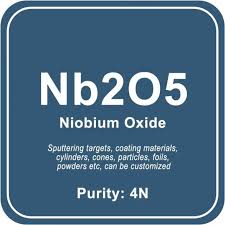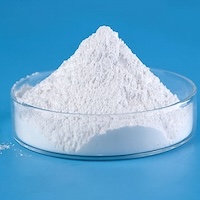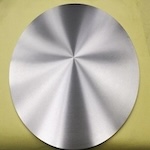-
Give us a call +86 -755-25432352
-
Email us info@urbanmines.com
-
Come & visit us No. 11, Bld. C, Hengmingzhu Tech. Industrial Park, Shajing Subdistrict, Bao'an District, Shenzhen, Guangdong, China
Give us a call +86 -755-25432352
Email us info@urbanmines.com
Come & visit us No. 11, Bld. C, Hengmingzhu Tech. Industrial Park, Shajing Subdistrict, Bao'an District, Shenzhen, Guangdong, China


Niobium Oxide Material Analysis, Niobium Oxide Target Preparation Technology, Niobium Oxide Target Application Fields
Niobium oxide (Nb2O5) is a high-performance material with remarkable properties, playing a key role in multiple high-tech fields.The R&D Department of UrbanMines Tech. Co., Ltd. Aims to use this article to deeply analyze the basic properties of niobium oxide materials, including their chemical and physical properties as well as comparisons with other materials, demonstrating their unique value in scientific and technological applications. Additionally, it will discuss the preparation technology methods for niobium oxide targets and explore their key application areas.
Chemical Properties
- Chemical stability: Niobium oxide exhibits exceptional stability towards most chemical substances at room temperature and demonstrates limited reactivity with acids and alkalis. This characteristic enables it to maintain its performance unaltered in harsh chemical environments, making it particularly suitable for applications involving chemical corrosion. Environmental applications.
- Electrochemical Properties: Niobium oxide possesses excellent electrochemical stability and electron transport properties, rendering it an optimal material choice for energy storage devices such as batteries and capacitors.
Physical Properties:
- High melting point: Niobium oxide possesses a remarkably high melting point (approximately 1512°C), enabling it to remain in solid form during most industrial processing conditions and making it suitable for high-temperature processes.
- Excellent optical properties: It exhibits a high refractive index and low dispersion properties, which make it a preferred material for the production of optical components such as filters and lens coatings.
- Electrical insulation properties: Niobium oxide serves as an exceptional electrical insulating material, with its high dielectric constant being particularly significant in the microelectronics and semiconductor industries.
Comparison with Other Materials
Compared with other oxides, niobium oxide exhibits superior performance in terms of chemical stability, high temperature stability, and optical and electrical properties. For example, niobium oxide offers a higher refractive index and better electrochemical stability than zinc oxide (ZnO) and Titanium Dioxide (TiO2). Competitive advantage: Among similar materials, niobium oxide stands out for its unique combination of properties, especially in applications requiring high temperature resistance, chemical stability, and advanced optoelectronic properties.
Preparation Technology and Method of Niobium Oxide Target Material.

Powder Metallurgy
Physical Vapor Deposition (PVD)
- Principle and process: PVD technology physically transforms the niobium oxide material from solid state to vapor state, and then condenses on the substrate to form a thin film. The method enables precise control of film thickness and composition.
- Advantages: Able to produce high-purity, high-uniformity films, suitable for demanding optoelectronics and semiconductor fields.
- Limitations: Equipment costs and operating costs are high, and production efficiency is relatively low.
Chemical Vapor Deposition (CVD)
- Principle and process: CVD technology decomposes niobium-containing gas precursors at high temperatures through chemical reactions, thereby depositing a niobium oxide film on the substrate. The process enables precise control of film growth at the atomic level.
- Advantages: Films with complex structures can be produced at lower temperatures, and the film quality is high, making it suitable for the production of complex and high-performance optoelectronic devices.
- Limitations: The technology is complex, the cost is high, and the quality of the precursor is extremely high.
Comparison of Applicable Scenarios
- Powder metallurgy method: suitable for producing large-area, cost-sensitive target applications, such as large-scale industrial coating processes.
- PVD: Suitable for thin film preparation that requires high purity, high uniformity and precise thickness control, such as the manufacturing of high-end optoelectronic devices and precision instruments.
- CVD: Especially suitable for preparing films with complex structures and special properties, such as for research on high-performance semiconductor devices and nanotechnology.
In-depth Analysis of Key Application Areas of Niobium Oxide Targets
1. Semiconductor Field
- Application background: Semiconductor technology is the core of modern electronic equipment and has extremely high requirements on the electrical properties and chemical stability of materials.
- The role of niobium oxide: Because of its excellent electrical insulation and high dielectric constant, niobium oxide is widely used in the manufacture of high-performance insulating layers and gate dielectric materials, significantly improving the performance and reliability of semiconductor devices.
- Technology development: As integrated circuits develop towards higher density and smaller sizes, niobium oxide targets are increasingly used in microelectronics and nanotechnology, playing a key role in promoting the development of next-generation semiconductor technology.

2. Optoelectronics Field
- Application background: Optoelectronic technology includes optical communication, laser technology, display technology, etc. It is an important branch of the field of information technology and has strict requirements on the optical properties of materials.
- The role of niobium oxide: Taking advantage of the high refractive index and good optical transparency of niobium oxide, the prepared films have been widely used in optical waveguides, anti-reflective coatings, photodetectors, etc., significantly improving the optical performance and performance of the equipment. efficiency.
- Technology development: The application of niobium oxide targets in the field of optoelectronics promotes the miniaturization and integration of optical devices, providing important support for the development of high-speed communications and high-precision photoelectric detection technology.
3. Coating Material Field
- Application background: Coating technology has a wide range of applications in material protection, functionalization and decoration, and there are diverse demands for the performance of coating materials.
- The role of niobium oxide: Because of its high temperature stability and chemical inertness, niobium oxide targets are used to prepare high temperature resistant and corrosion resistant coatings and are widely used in aerospace, energy and other fields. In addition, its excellent optical properties also make it an ideal choice for making optical lenses and window materials.
- Technology development: With the development of new energy and new material technologies, niobium oxide-based coating materials have shown great potential in improving energy efficiency and reducing environmental impact, promoting the development of green and sustainable technologies.